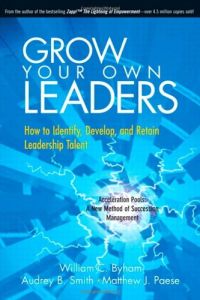Join getAbstract to access the summary!

Join getAbstract to access the summary!
Matthew J. Paese, Audrey B. Smith and William C. Byham
Grow Your Own Leaders
How to Identify, Develop and Retain Leadership Talent
FT Prentice Hall, 2002
What's inside?
Just as with tomatoes, if you want ripe and ready leaders, you have to grow your own.
Recommendation
This is a comprehensive guide to identifying and developing future leaders. The authors present an exhaustive (sometimes exhausting) explanation of a program called "Acceleration Pooling" - a fancy collective name for grouping everyone in your firm who has the potential to lead. Much of the content seems like common sense, yet, organizations harried by short-term challenges can easily neglect long-term tasks, such as leadership development. This carefully planned, meticulously documented approach may keep organizations from neglecting the future. Despite its turgid, jargon-choked style, this book may fill the need. Time-pressed managers can glean the most important points quickly from chapters 2, 6 and 16, which have some solid gold principles of succession planning. Human Resource managers will want to delve into the other chapters. The authors, who are consultants, make a strong case for hiring consultants to implement this system, and have registered, copyrighted, service marked and/or trademarked every form and bit of terminology that could possibly be protected. getAbstract.com notes that many of these leadership building methods, tools and techniques are in the public domain, in case you want to do-it-yourself, using this guide book.
Summary
About the Authors
William C. Byham, Ph.D., co-author of Zapp!TM The Lightning of Empowerment and author of HeroZTM - Empower Yourself, Your Co-Workers, and Your Company, is chairman and CEO of the human resources consultancy Development Dimensions International (DDI). Audrey B. Smith, Ph.D., is consulting vice president of the Staffing and Assessment Consulting group and the Executive Succession Management Group at DDI. Matthew J. Paese, Ph.D., leads and manages DDI’s Executive Development Practice.
















Comment on this summary